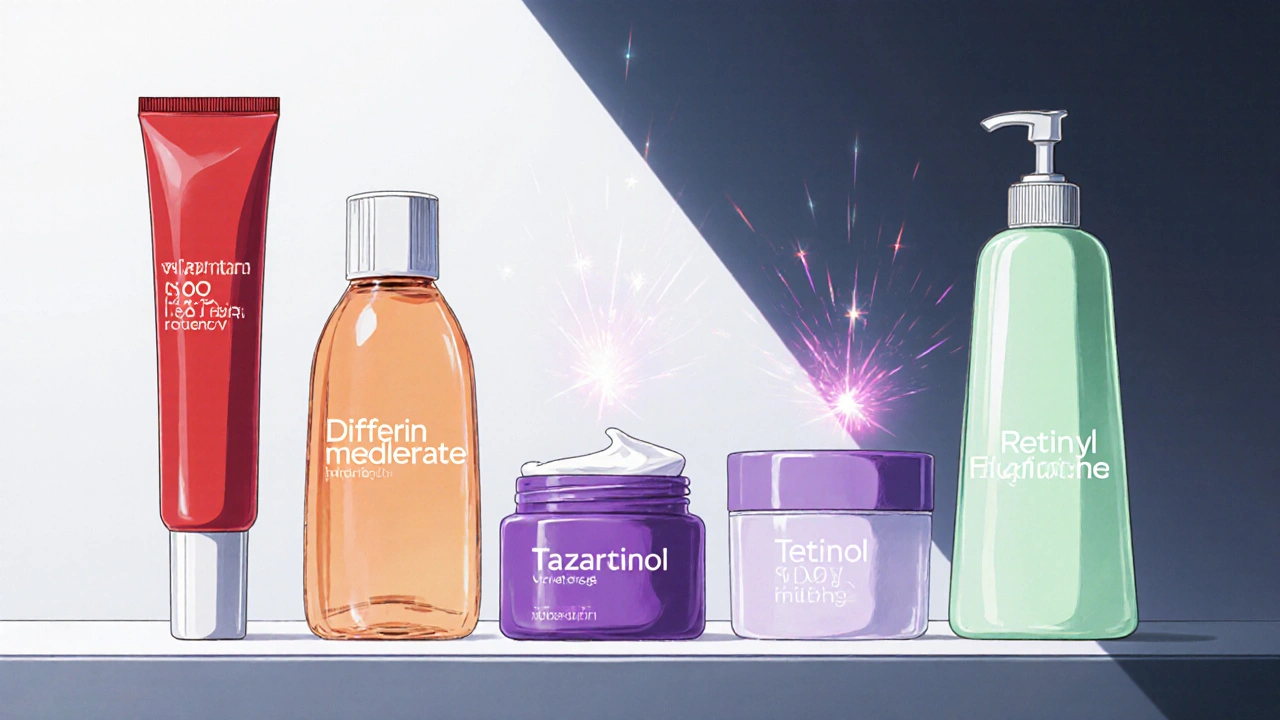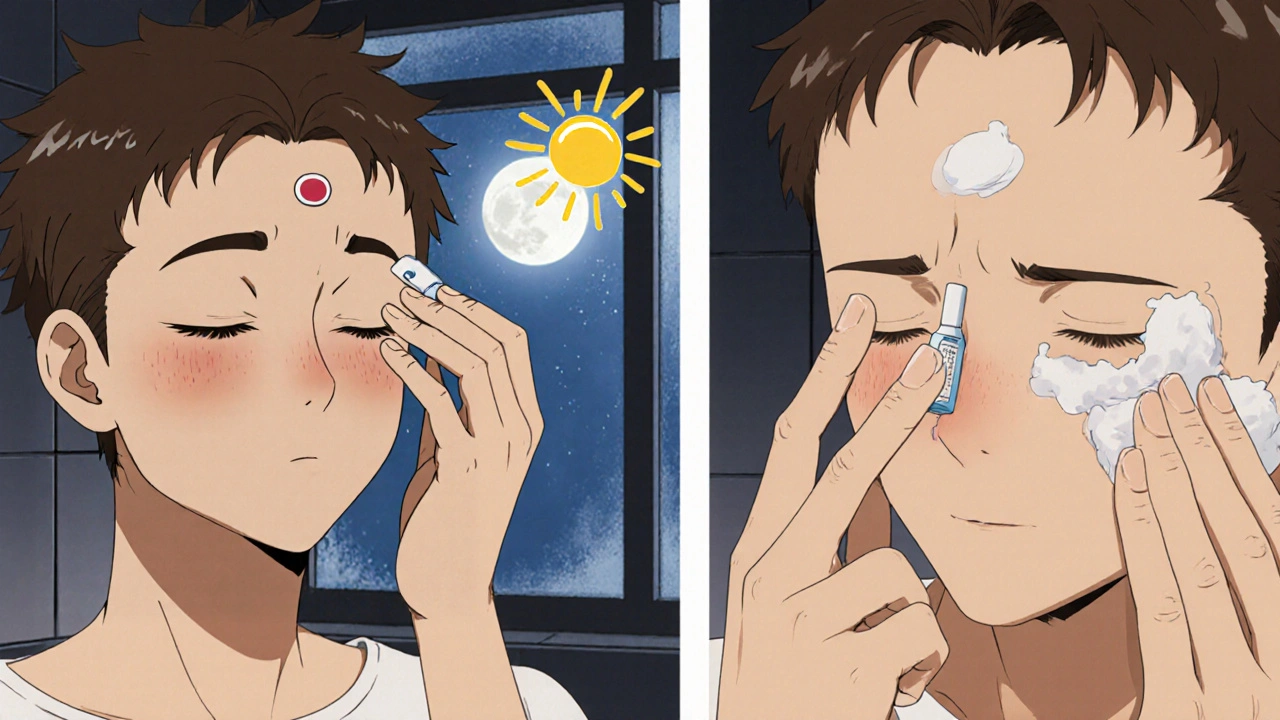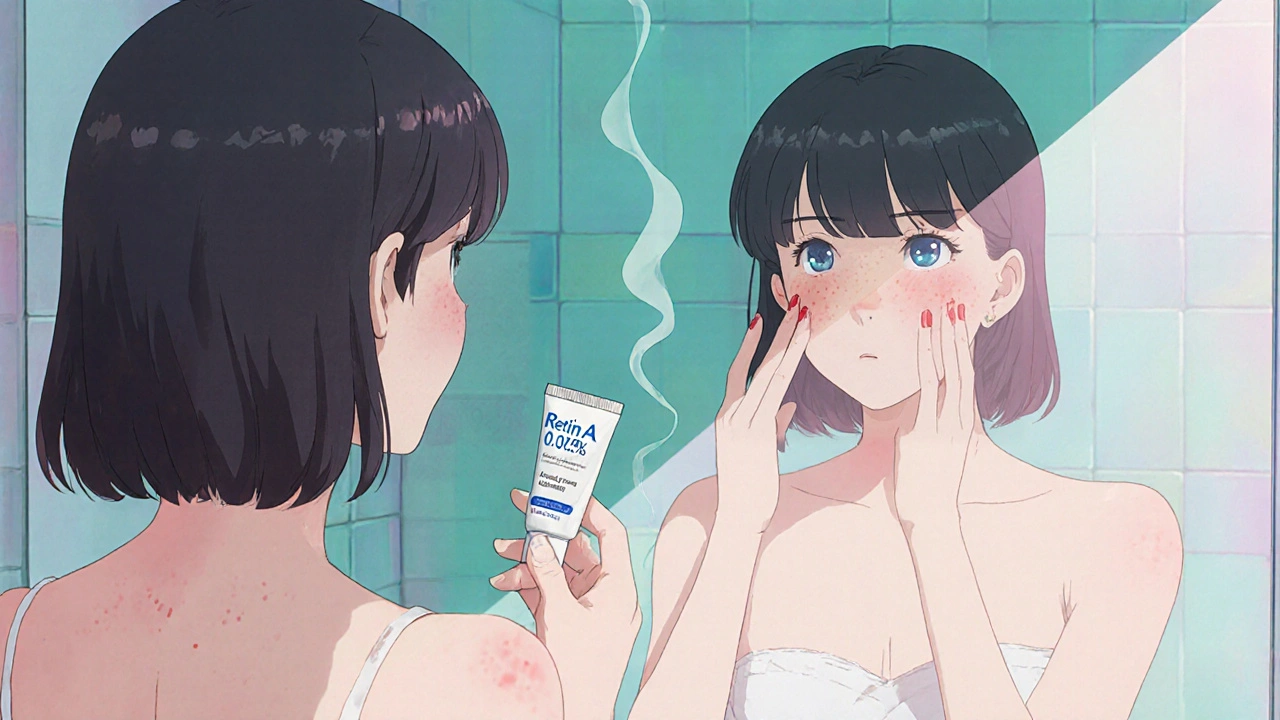When it comes to prescription‑strength acne and anti‑aging treatments, Retin A 0.025% is often the drug of choice. Retin A 0.025% (tretinoin) is a topical formulation of the vitamin A derivative tretinoin, approved for both acne vulgaris and photodamaged skin. Its high potency makes it a fast‑acting option, but it also brings a higher risk of irritation compared with over‑the‑counter retinoids. If you’re weighing whether to start Retin A or explore gentler alternatives, this guide breaks down the science, the side‑effects, and the practical trade‑offs.
How Tretinoin Works
Tretinoin binds to retinoic acid receptors (RAR) in the epidermis, regulating gene expression that speeds up cell turnover and prevents clogged pores. In plain English, it pushes old skin cells out faster and encourages new, collagen‑rich cells to surface. The result is clearer skin, smoother texture, and a reduction in fine lines. Because the mechanism hits the skin at a cellular level, visible improvements can appear within 4-6 weeks, although the full anti‑aging benefit may take 3-6 months.
Common Retinoid Alternatives
Not everyone can tolerate tretinoin’s intensity. Below are the most frequently mentioned alternatives, each with its own potency tier and prescription status.
- Differin (adapalene 0.1%) - a synthetic retinoid available OTC in many countries, known for a milder irritation profile.
- Retinol - the over‑the‑counter parent compound that converts to tretinoin in the skin, offering a gradual, low‑dose effect.
- Tazarotene 0.05% - a high‑potency prescription retinoid often used for psoriasis and severe acne.
- Retinyl Palmitate - an ester of retinol that is the gentlest on the skin, usually found in moisturizers.
Side‑Effect Profile Across Retinoids
All retinoids share a core set of potential irritation symptoms: redness, peeling, dryness, and a temporary worsening of acne (the so‑called “purge”). The intensity varies with concentration, formulation, and individual skin sensitivity.
- Retin A 0.025%: Highest efficacy, higher chance of erythema and dryness, especially during the first 2 weeks.
- Differin 0.1%: Moderate efficacy, usually tolerable for most skin types, but still may cause mild flaking.
- Retinol (0.5-1%): Low‑to‑moderate efficacy, minimal irritation for most users; results appear more slowly.
- Tazarotene 0.05%: Very high potency, strong peeling; best reserved for dermatologists’ supervision.
- Retinyl Palmitate (0.5%): Minimal irritation, primarily a skin‑conditioning ingredient rather than a treatment.

Detailed Comparison Table
| Product | Strength / Formulation | Prescription? | Typical Use | Onset of Visible Results | Common Side Effects | Best For |
|---|---|---|---|---|---|---|
| Retin A 0.025% | 0.025% tretinoin cream or gel | Yes | Acne, photodamage, fine lines | 4-6 weeks (early), 3-6 months (full) | Redness, peeling, dryness, initial purge | Patients seeking rapid, strong results and willing to manage irritation |
| Differin (Adapalene) | 0.1% adapalene gel | No (OTC in many regions) | Mild‑to‑moderate acne | 6-8 weeks | Mild flaking, occasional redness | Beginners or sensitive skin needing acne control |
| Retinol | 0.5-1% retinol serum/cream | No | Anti‑aging, texture improvement | 2-4 months | Very mild dryness, occasional tingling | Those preferring a gentle, gradual anti‑aging routine |
| Tazarotene | 0.05% cream, 0.1% gel | Yes | Severe acne, psoriasis, deep wrinkles | 4-6 weeks | Intense peeling, erythema, photosensitivity | Heavy‑duty cases under dermatologist care |
| Retinyl Palmitate | 0.5% ester in moisturizers | No | Skin conditioning, mild brightening | 6+ months (subtle) | Practically none | Very sensitive skin or as a supportive ingredient |
Pros and Cons at a Glance
Below is a quick rundown to help you picture each option without diving back into the table.
- Retin A 0.025% - Pro: Fast, strong results; Con: Higher irritation risk.
- Differin - Pro: OTC, lower irritation; Con: Slower than tretinoin.
- Retinol - Pro: Very gentle, ideal for beginners; Con: Takes longer to see changes.
- Tazarotene - Pro: Extremely potent for tough cases; Con: Requires strict dermatologist monitoring.
- Retinyl Palmitate - Pro: Almost no side effects; Con: Limited efficacy as a primary treatment.
How to Choose the Right Retinoid for You
Ask yourself these three questions before committing:
- What’s my primary skin goal? Acne clearance, anti‑aging, or both?
- How tolerant is my skin to irritation? Have I used any retinoids before?
- Do I have access to a dermatologist for prescription monitoring?
If you need fast acne control and can handle a bit of dryness, Retin A 0.025% is a solid bet. If you’re new to retinoids or have rosacea‑prone skin, start with Differin or a low‑percentage retinol and slowly build up. For severe, stubborn acne or psoriasis, discuss Tazarotene with a dermatologist. And if you simply want a light brightening boost without any peeling, Retinyl Palmitate works as a gentle add‑on.

Application Tips to Minimize Irritation
Even the most robust retinoid can be tamed with the right routine:
- Begin with a clean, dry face. Wait 20‑30 minutes after washing to reduce water‑mediated dilution.
- Apply a pea‑size amount of Retin A 0.025% to the entire face, avoiding the eye area.
- Start every other night for the first 2 weeks, then increase to nightly as tolerance builds.
- Follow with a fragrance‑free moisturizer to lock in hydration and buffer irritation.
- Never skip sunscreen. Retinoids increase photosensitivity, so a broad‑spectrum SPF 30+ is non‑negotiable.
When to Seek Professional Help
If you notice any of the following, pause the product and book a dermatologist:
- Severe burning or stinging that lasts more than 15 minutes.
- Excessive crusting, blistering, or spreading redness.
- Persistent acne flare that doesn’t improve after 4 weeks.
A clinician can adjust the concentration, suggest a different retinoid, or add topical steroids to calm inflammation.
Frequently Asked Questions
Can I use Retin A 0.025% together with other acne medications?
Yes, but timing matters. Apply Retin A at night and use benzoyl peroxide or salicylic acid in the morning. Combining them simultaneously can boost irritation.
Is Retin A safe for pregnant or breastfeeding women?
Tretinoin is classified as Category C for pregnancy. It’s best to avoid during pregnancy and consult a doctor if nursing.
How long should I stay on Retin A before switching?
Most dermatologists recommend a minimum of 12 weeks to assess true efficacy. If you’re not seeing improvement after that, discuss alternatives.
Can I use Retin A on my body (e.g., back or chest) for acne?
Yes, but start with a smaller amount and test on a small patch first. Body skin can be thicker and may tolerate a slightly higher dose.
What’s the difference between tretinoin and retinol?
Tretinoin is the active acid that works directly on skin cells. Retinol is a precursor that must be converted to tretinoin inside the skin, making it slower but gentler.
Whether you opt for the prescription power of Retin A 0.025% or a milder OTC retinoid, the key is consistency, sun protection, and listening to your skin’s signals. With the right choice, you’ll see clearer, smoother skin without unnecessary frustration.

